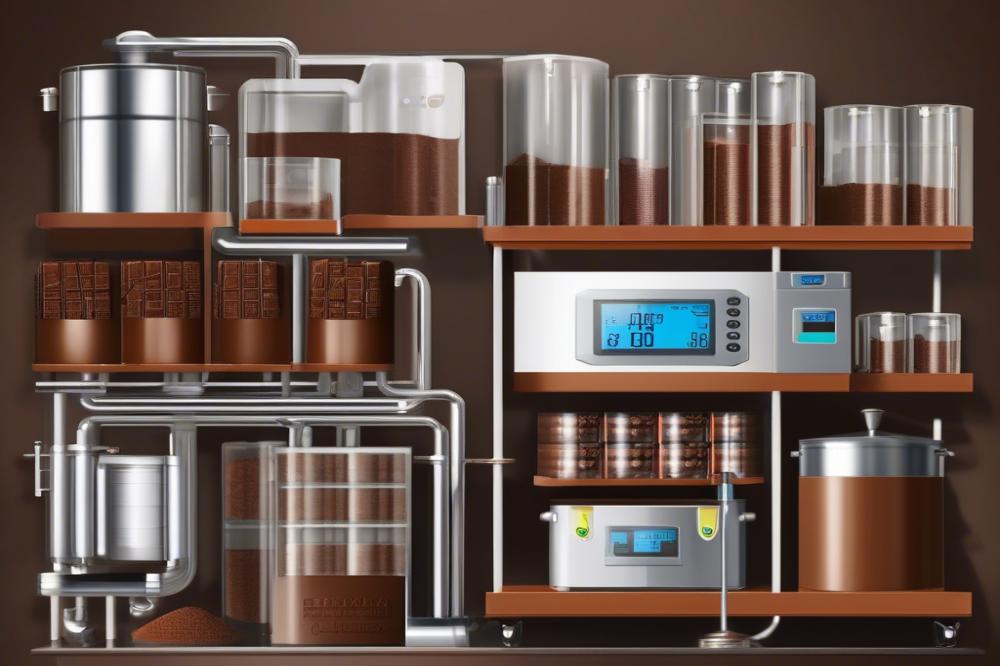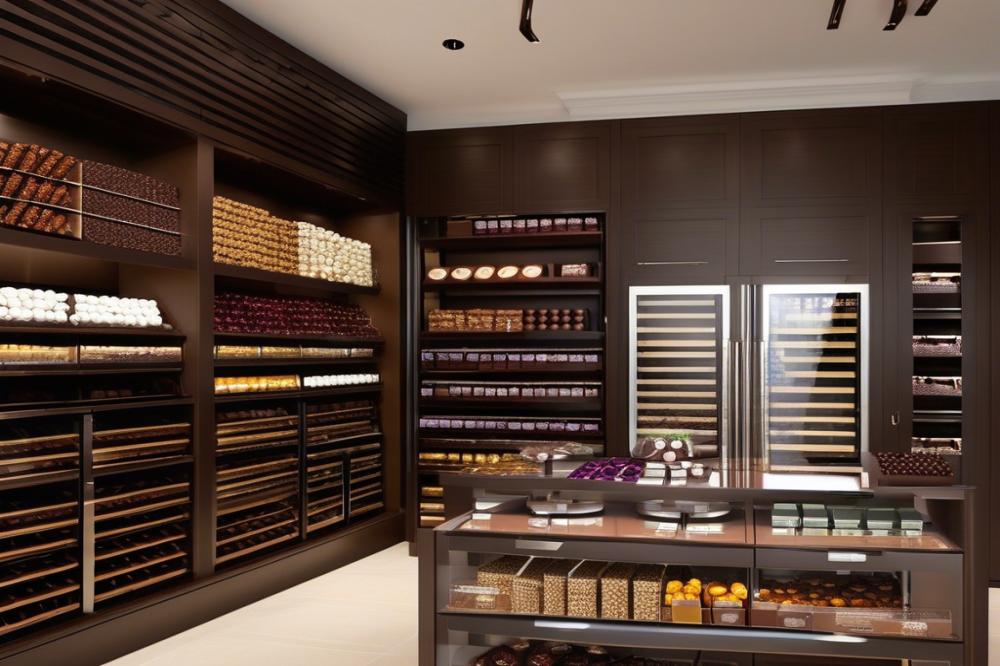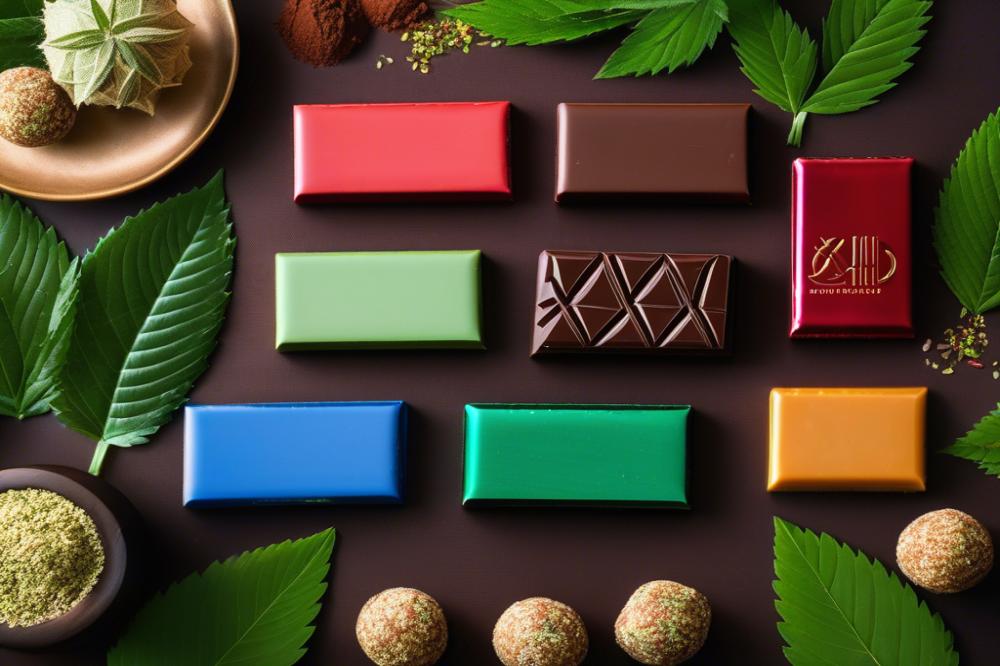Introduction
Chocolate is beloved by many, and its proper storage plays a significant role in the industry. Keeping chocolate fresh can greatly affect its quality and taste. Chocolate Preservation is crucial for prolonging shelf life and maintaining delicious flavors. Unfortunately, producers face several challenges in this area, which can impact the end product.
temperature control is one of the main concerns. Chocolate can easily be ruined by extreme heat or cold. When it gets too warm, it may melt or suffer from blooming, which detracts from its visual appeal and taste. humidity also plays a key role. High moisture levels can lead to sugar migration, affecting the texture and flavor. These factors make smart storage techniques essential for manufacturers and retailers alike.
Effective packaging solutions are on the rise as technology evolves. Options such as vacuum sealing can greatly improve freshness, keeping air and moisture out. Different types of chocolate, including dark and milk varieties, require specific care. Each type has unique attributes that influence how they should be stored. For instance, dark chocolate generally has a longer shelf life than milk chocolate, yet both benefit from careful handling.
Attention to detail in storage methods is vital for flavor retention. By managing conditions, chocolate producers can uphold food safety standards while satisfying their customers. With ongoing innovations, the chocolate industry is finding new ways to preserve its beloved treats, ensuring they remain tasty and enjoyable for everyone.
Chocolate Storage: Innovations and Techniques

Emerging Storage Techniques for Chocolate
New developments in Chocolate Storage are changing the way connoisseurs savor their favorite treats. Proper storage methods can significantly impact the flavor and texture of both dark and milk chocolate. Innovative packaging solutions are now available that protect chocolate from external elements. These new technologies focus on maintaining optimal conditions that promote flavor retention and extend shelf life. For instance, specialized containers designed to block light can help in preserving the complex flavors of premium chocolate.
Advanced temperature control Methods
Temperature control is critical for maintaining the quality of chocolate. Many enthusiasts have realized that exposing chocolate to fluctuating temperatures can lead to unwanted blooming, affecting both aesthetics and taste. Modern refrigeration systems now come with precise temperature controls specifically for this purpose. These advancements allow chocolate makers to store their products in a way that maintains a steady, ideal temperature. By using these controlled environments, they can significantly enhance the chocolate’s longevity.
Innovations in humidity Management
Humidity management plays a notable role in Chocolate Preservation. High moisture levels can lead to spoilage and alter a chocolate’s delightful texture. New science-backed techniques have emerged that effectively monitor and regulate humidity levels in storage facilities. Dehumidifiers and moisture-absorbing materials are being implemented to create an ideal atmosphere. This optimization not only improves food safety but also helps keep the chocolate’s rich, creamy mouthfeel intact. By minimizing humidity, the risk of mold and other bacteria decreases, leading to a longer-lasting treat.
Through these innovative storage techniques, chocolate lovers can now better enjoy their delectable indulgences without sacrificing quality. Each method contributes uniquely to the future of chocolate preservation, making sure that every bite remains a perfect blend of flavor and texture.
Packaging Solutions for Optimal Preservation

Latest Advancements in Chocolate Packaging
Innovative packaging solutions are changing the chocolate world. Brands now use materials that provide better temperature control. This helps maintain the quality of both dark chocolate and milk chocolate. Special films can even block out light, which is crucial for preserving flavor. Moreover, materials that reduce humidity keep chocolate from becoming too soft. New designs also aid in preventing any unwanted odors from seeping in. These advancements lead to packaging that keeps chocolate fresh for longer.
Impact of Packaging on Flavor Retention
Flavor retention plays a vital role in a chocolate’s appeal. Packaging that limits air exposure is essential. Vacuum sealing is one technique that helps lock in the taste, creating a barrier against oxidation. When oxygen interacts with chocolate, it can dull its rich flavors. Additionally, packaging that manages temperature ensures the chocolate does not melt or change texture. Even the best ingredients can’t shine if the flavor suffers from poor storage. The right packaging guarantees that every bite is a burst of delight.
Sustainable Packaging Options and Their Benefits
Sustainability in packaging is growing in importance. Many companies are now exploring eco-friendly materials. Biodegradable options reduce waste and lessen the environmental impact. Paper wrappers or compostable films are becoming commonplace. Not only does this shift help the planet, but it also attracts customers who care about food safety and environmental issues. Sustainable choices don’t mean sacrificing quality. These innovative materials can still maintain the necessary conditions for chocolate storage. Embracing green packaging benefits everyone, from the manufacturers to the consumers.
Enhancing Shelf Life through Technology

Understanding the shelf life of dark and milk chocolate is crucial for both consumers and producers. Most dark chocolate can last up to two years if stored properly, while milk chocolate typically has a shorter lifespan of about one year. The ingredients and the method of production play significant roles in how long these treats can stay fresh. Factors like temperature control and humidity are pivotal in preserving quality.
To tackle these challenges, innovative methods have emerged to extend the longevity of chocolate. For example, advanced packaging solutions have been developed to minimize exposure to air and moisture. These options work effectively in maintaining flavor retention and texture. Using sophisticated wrappers, chocolate makers can seal in freshness, allowing chocolate enthusiasts to enjoy their favorite treats for longer periods.
The Role of Vacuum Sealing in Preventing Spoilage
Vacuum sealing stands out as one of the most effective storage techniques. It removes air from the packaging, creating an airtight environment for the chocolate. This technology significantly reduces oxidation, which can lead to spoilage. Even minor increases in temperature or humidity can ruin a chocolate’s flavor, but vacuum sealing helps combat these issues.
Moreover, maintaining food safety is paramount in chocolate preservation. Proper storage methods, including vacuum sealing, not only extend shelf life but also enhance the overall safety of the product. Consumers can feel more confident enjoying their chocolates, knowing that modern techniques are at work to protect their indulgence.
Incorporating these methods allows chocolatiers to present their creations in the best possible condition. As technology advances, the future seems bright for chocolate lovers everywhere. Taking advantage of such innovations ensures that the sweet pleasures do not fade too quickly.
Maintaining Food Safety in Chocolate Storage
Importance of Food Safety in the Chocolate Industry
Food safety is vital in every industry, especially in chocolate production. Unsafe practices can lead to serious health issues. Contaminated chocolate might harm consumers and damage brand reputations. For chocolate manufacturers, this means prioritizing safe handling and storage. Quality impacts sales, so maintaining safety standards ensures customer trust.
Techniques for Ensuring Safe Storage
Effective storage techniques are crucial for preserving chocolate quality. Temperature control plays a significant role; ideally, chocolate should be kept at a stable, cool temperature. Humidity levels must also be monitored. Excess moisture can cause chocolate to bloom, ruining its appealing texture. Packaging solutions, such as vacuum sealing, are important for extending shelf life. Using airtight containers minimizes exposure to air and pests, which can degrade flavor retention over time.
Dark chocolate requires different considerations than milk chocolate. Its higher cocoa content makes it less sensitive to moisture, but it still deserves careful attention. Proper techniques, combined with quality ingredients, can significantly enhance the overall quality and safety of chocolate products.
Regulatory Standards and Innovations in Safety Practices
Regulatory standards set by health and safety agencies govern the chocolate industry. These guidelines help ensure that all products meet safety and quality benchmarks. Innovations in safety practices contribute to better handling of chocolate, thus preserving its integrity. For example, advanced monitoring systems can track temperature and humidity throughout the storage process. These technologies help prevent spoilage and maintain the sensory qualities of chocolate.
Overall, staying informed about food safety isn’t just important; it’s essential. Embracing innovative solutions leads to a safer environment for both producers and consumers. By keeping safety as a core value, the chocolate industry can continue to thrive while delivering delicious products to everyone.
Wrapping Up Innovations in Chocolate Preservation
Key Innovations in Chocolate Storage
Recent advancements have transformed how chocolate is kept fresh and delectable. Innovative packaging materials now offer improved protection from air and light. These materials help lock in flavors and prevent any unwanted spoilage. Smart storage solutions use technology to monitor environmental factors. Sensors now track both temperature and humidity, which are crucial for maintaining quality over time. As a result, chocolate lovers can enjoy their favorite treats without worrying about texture or taste changes.
Future Trends in Chocolate Preservation
Looking ahead, the chocolate industry is likely to see even more groundbreaking changes. Sustainability is becoming a major focus. Manufacturers are researching eco-friendly materials for packaging. Not only does this address environmental concerns, but it also aims to enhance the freshness of the product. Furthermore, techniques like vacuum sealing and nitrogen flushing may become more commonplace. These methods could provide exciting ways to expand shelf life while preserving flavor.
Final Thoughts on Maintaining Quality
Preserving chocolate’s quality relies heavily on innovation. The introduction of new technologies and materials provides exciting opportunities for chocolate enthusiasts. Keeping chocolates at the right temperature and controlling humidity can significantly enhance taste and texture. As new ideas emerge, it’s clear that the chocolate world is evolving. This ongoing transformation promises that every bite remains as delightful as intended. Embracing these innovations can be the key to relishing every moment with chocolate. Enjoy the journey of flavor, freshness, and creative storage solutions!



